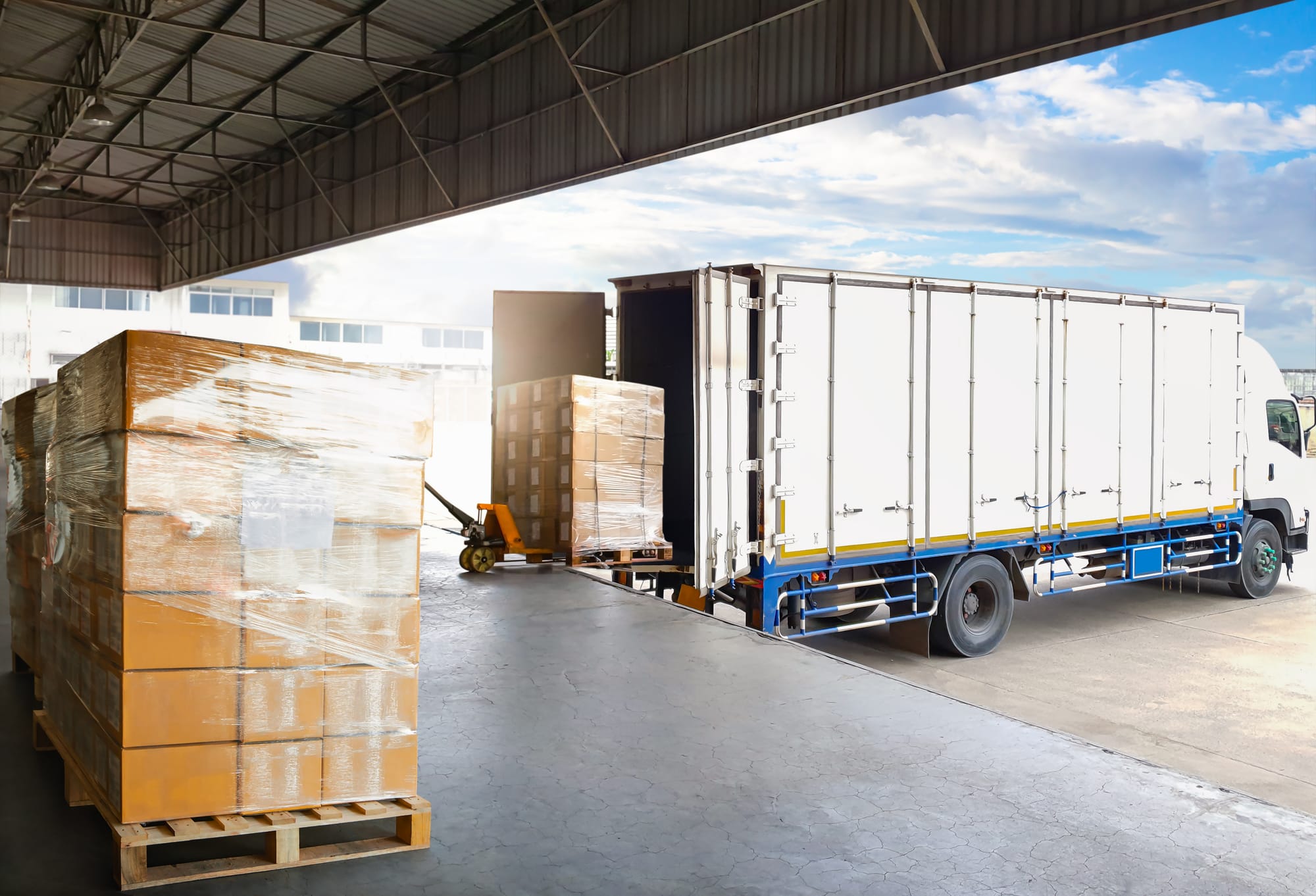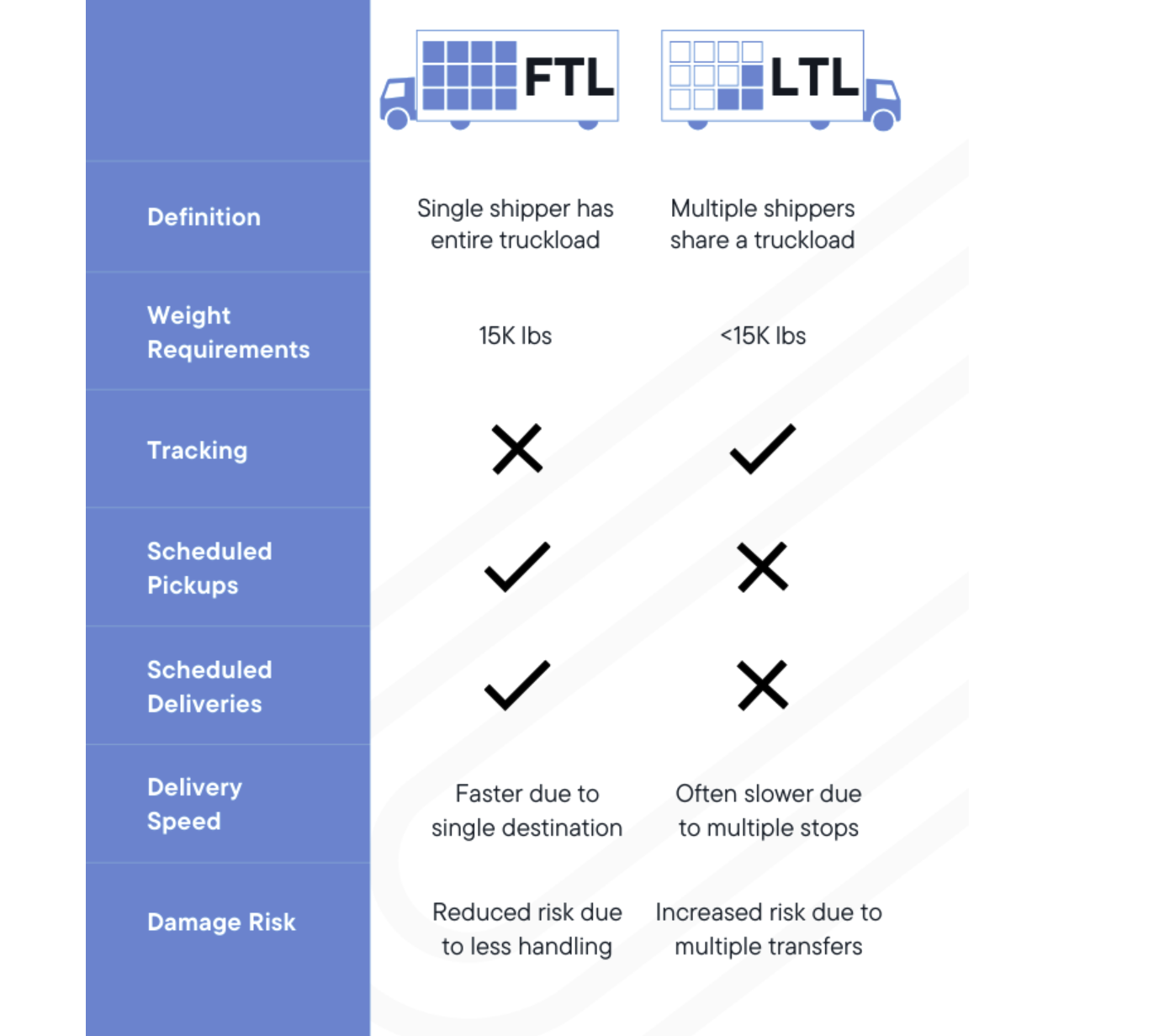What is the Difference Between LTL and FTL Freight Shipping? - Copy

It is easy to get confused when hearing the acronyms for truckload shipping and less-than-truckload shipping as you try to decide which one is right for your specific needs. Both full truckload (FTL or TL) and less-than-truckload (LTL) options have their place in the freight shipping industry. Choosing the right freight shipping method depends on several variables, including the size and weight of your shipment, freight classification, and delivery timelines. It also might make sense to partner with a third-party logistics provider (3PL) to help manage your freight shipments.

LTL refers to less-than-truckload.
LTL is when multiple shippers’ freight is on the same trailer rather than having a single company’s freight exclusively on an individual trailer.
Several LTL shipments are combined into one truck to fill it as near to capacity as possible. This is a great option for shipments that are between one and six pallets or any shipment that is less than 14 linear feet because it makes the most out of the available shipping space on a given truck. This is a beneficial for the shipping needs of small businesses.
FTL refers to full truckload freight.
FTL shipping is commonly used for large shipments that require taking up the entire truck, or at least close to it.
With FTL, your freight is the only freight moving on an individual truck so you have exclusivity to the entire truck and theoretically are filling the truckload. You can reserve the truck with its full capacity even if you don’t require filling up the entire available space. Doing so would ensure that you won’t have to worry about your goods changing hands at any time or your goods being stuck with other products.


